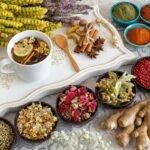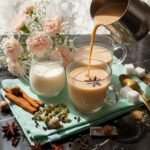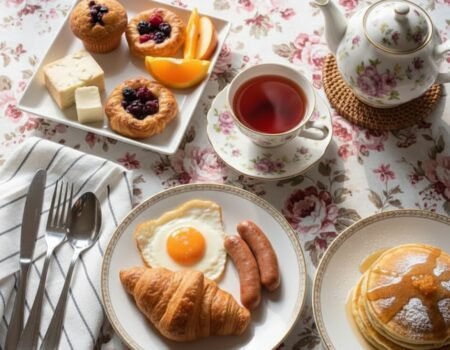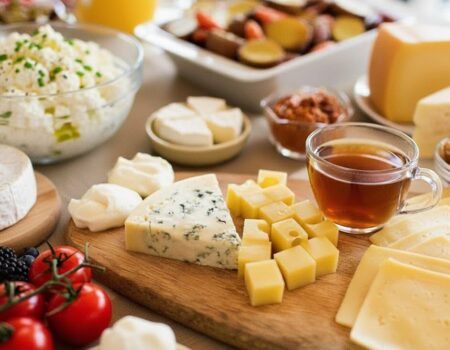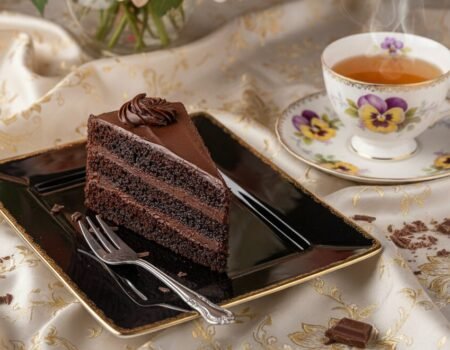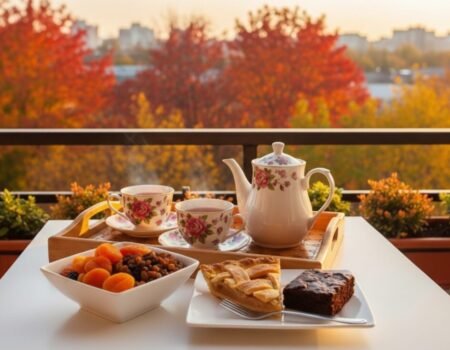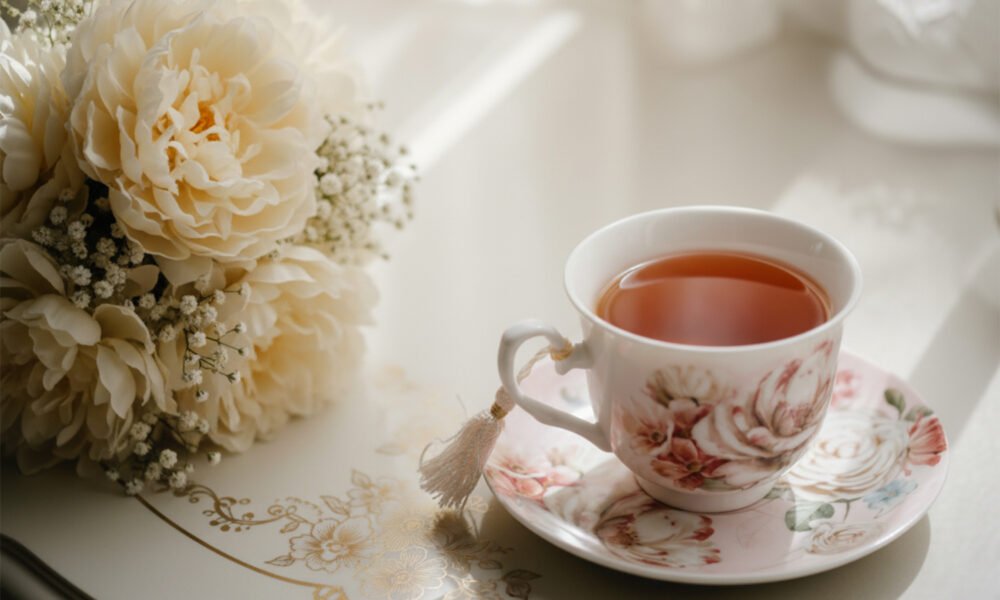
How to Brew Tea Like the English: The Proper Way to Make a Cup of British Tea
Index
Have you ever tried to make British tea at home only to end up with a bland, weak brew? Many tea lovers struggle to capture that rich, comforting flavor that makes English tea so special.
You might be using the wrong tea, incorrect water temperature, or improper steeping time without even knowing it.
The British drink over 100 million cups of tea daily, making it their national beverage. A proper cup isn’t just about taste—it’s a cultural ritual dating back centuries. This guide will walk you through each step of brewing authentic British tea, from selecting the right tea bags to the great debate of when to add milk.
Ready for the perfect cuppa?
Key Takeaways
- British people drink over 100 million cups of tea daily, making it their national beverage with deep cultural roots.
- Use robust black teas like Yorkshire Tea, PG Tips, or Twining’s English Breakfast, and steep for 3-5 minutes with water at a full rolling boil (212°F / 100°C).
- Warm your teapot first with hot water for 30 seconds to maintain proper brewing temperature, which can drop 18-27°F / 10-15°C in a cold pot.
- Most English tea drinkers add whole milk (one teaspoon) and white sugar (one teaspoon) to their tea, not cream or honey.
- The proper tools matter – use a genuine teapot (ideally UK-made), a tea cozy to maintain heat, and either sturdy mugs for daily use or fine china for special occasions.
What Makes English Tea Special?
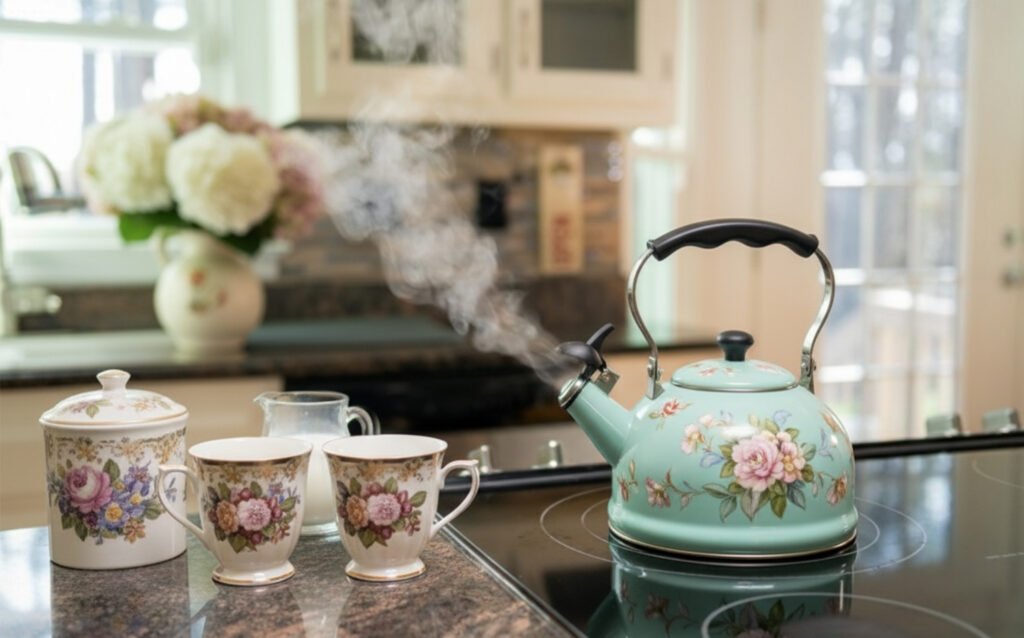
English tea stands apart because of its rich cultural roots in the United Kingdom. The British approach to tea involves specific black tea varieties like Yorkshire Tea, PG Tips, and Ty-phoo that create a robust flavor profile.
These teas form the backbone of the traditional cup that millions enjoy daily across England. The proper British cup demands whole milk rather than cream or non-dairy options. This creates the perfect balance between the strong black tea and the smooth dairy addition.
The magic happens in the preparation process. Boiling water must reach a full rolling boil before meeting the tea leaves or bags. The steeping time matters greatly, with most English tea drinkers allowing 3-5 minutes for flavor development.
Many British homes still use teapots with tea cozies to maintain the perfect temperature throughout serving. This attention to detail transforms a simple drink into a cultural icon that defines British daily life.
The ritual of tea drinking crosses all social boundaries in England, making it truly special.
Essential Ingredients for a Proper British Cup of Tea
The right ingredients make all the difference between an ordinary cup and a proper British tea experience. Quality black tea forms the foundation, while the correct milk and sweetener options complete this classic beverage.
Black tea varieties
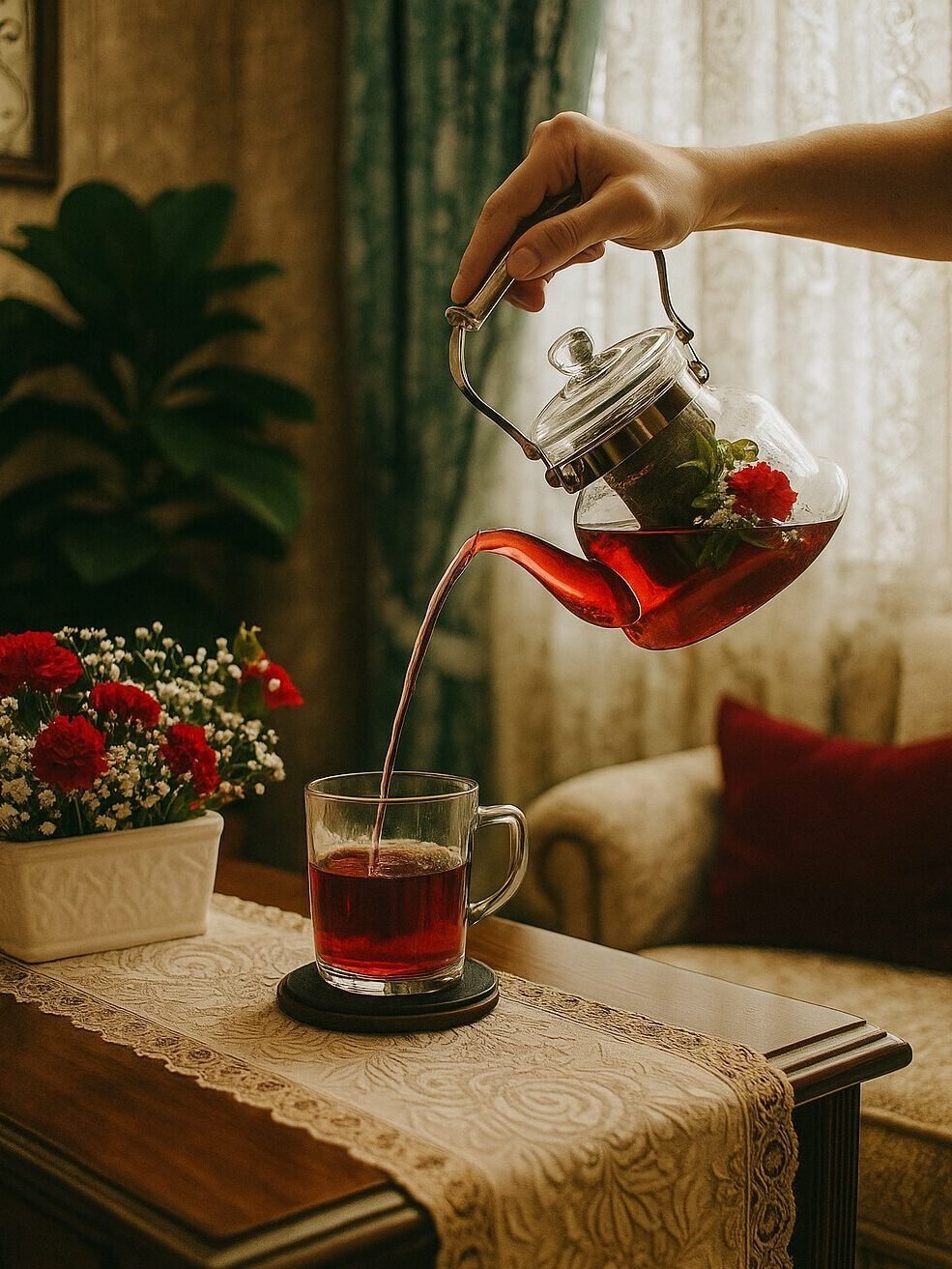
British tea culture centers around robust black teas with rich flavors and deep amber colors. Assam tea, which gained popularity in the UK after 1870, offers a malty, full-bodied taste perfect for morning cups.
This strong brew needs about 4 minutes of steeping time to reach its ideal strength. Ceylon tea provides a crisp, citrusy profile that many English tea drinkers favor for afternoon sipping.
Darjeeling, often called the “champagne of teas,” requires a shorter steep of just 2 minutes to preserve its delicate muscatel notes.
For Americans seeking authentic English tea experiences, English Breakfast blends serve as the closest equivalent to what Brits drink daily. Twining’s English Breakfast stands out as a recommended option that balances strength and flavor.
Most proper British cups use either one tea bag or half a tablespoon of loose leaf tea per cup of water. Loose tea often delivers more complex flavors, making it a favorite among serious tea enthusiasts who appreciate traditional brewing methods.
The right kind of milk
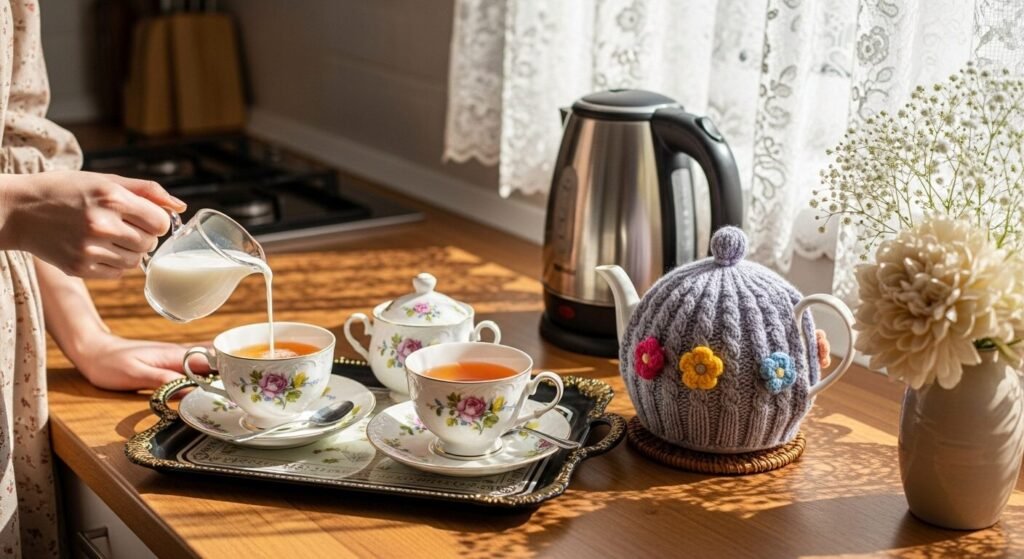
Milk plays a crucial role in creating that perfect cup of english tea. Traditional British tea calls for whole milk, though 2% milk works as an acceptable substitute in American kitchens.
We suggest using just one teaspoon to start – you can always add more to taste. The milk should be cold when added to your hot tea, creating that perfect temperature balance. Many tea lovers avoid cream entirely as it overwhelms the delicate tea flavors.
Milk choice affects both flavor and texture in your teacup. Low-fat options provide a lighter taste that lets the tea shine through more clearly. Skim milk lacks the richness that complements strong black teas like English Breakfast.
The dash of milk you add should enhance rather than mask the natural qualities of your brew. For the most authentic experience, pour your milk into the cup either before or after the tea based on your personal preference – both methods have passionate defenders in the tea-drinking world.
Optional sweeteners
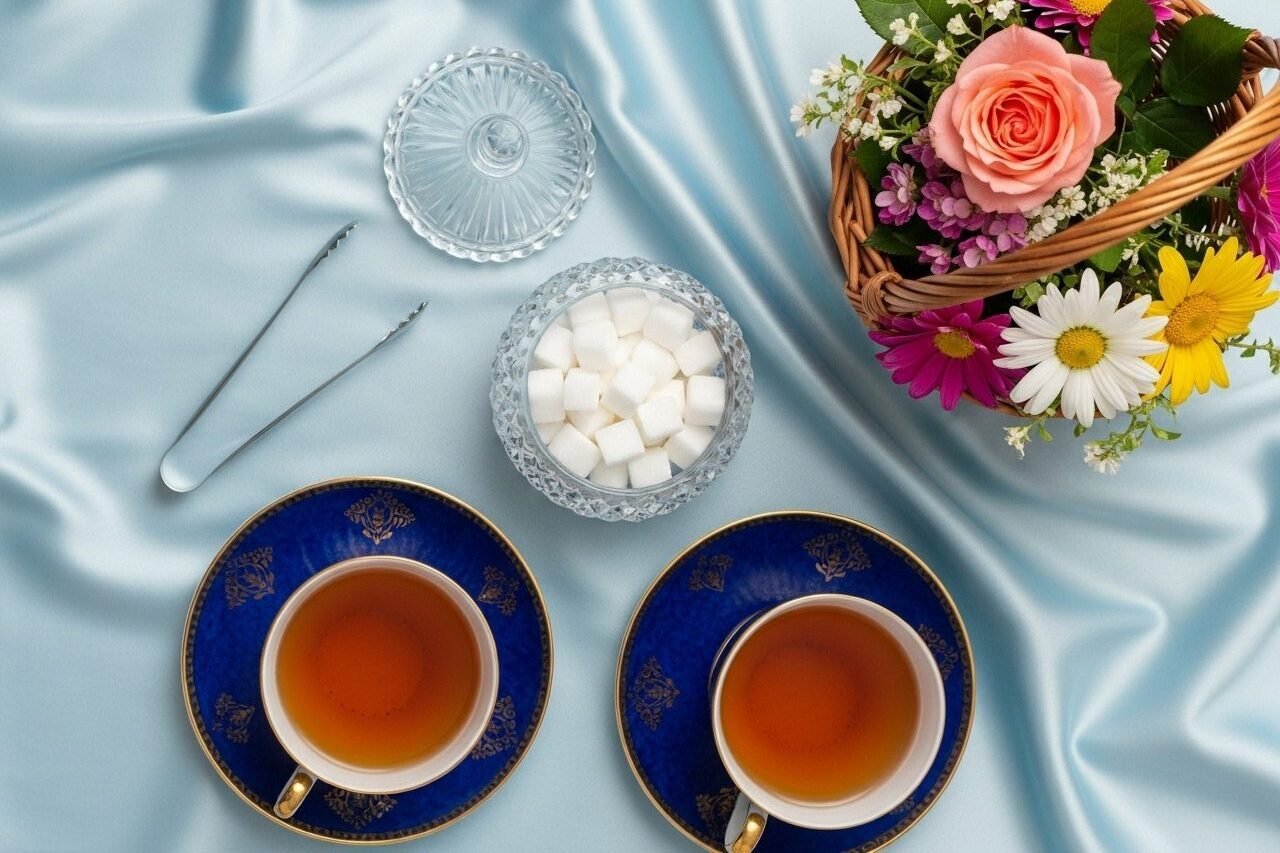
Most British tea drinkers add white sugar to their brew, with one teaspoon being the standard amount. You might notice that brown sugar rarely appears in a proper English tea service.
The British consider honey culturally out of place in tea, despite its popularity in other hot drinks.
This creates the classic taste that defines authentic British tea. If you visit for afternoon tea in the UK, expect to see white sugar cubes or granulated sugar served alongside your teapot.
Required Tools for Brewing English Tea
The right equipment makes all the difference when brewing a proper English cup of tea, from sturdy teapots that maintain heat to fine bone china cups that enhance the drinking experience.
Teapot and tea cozy
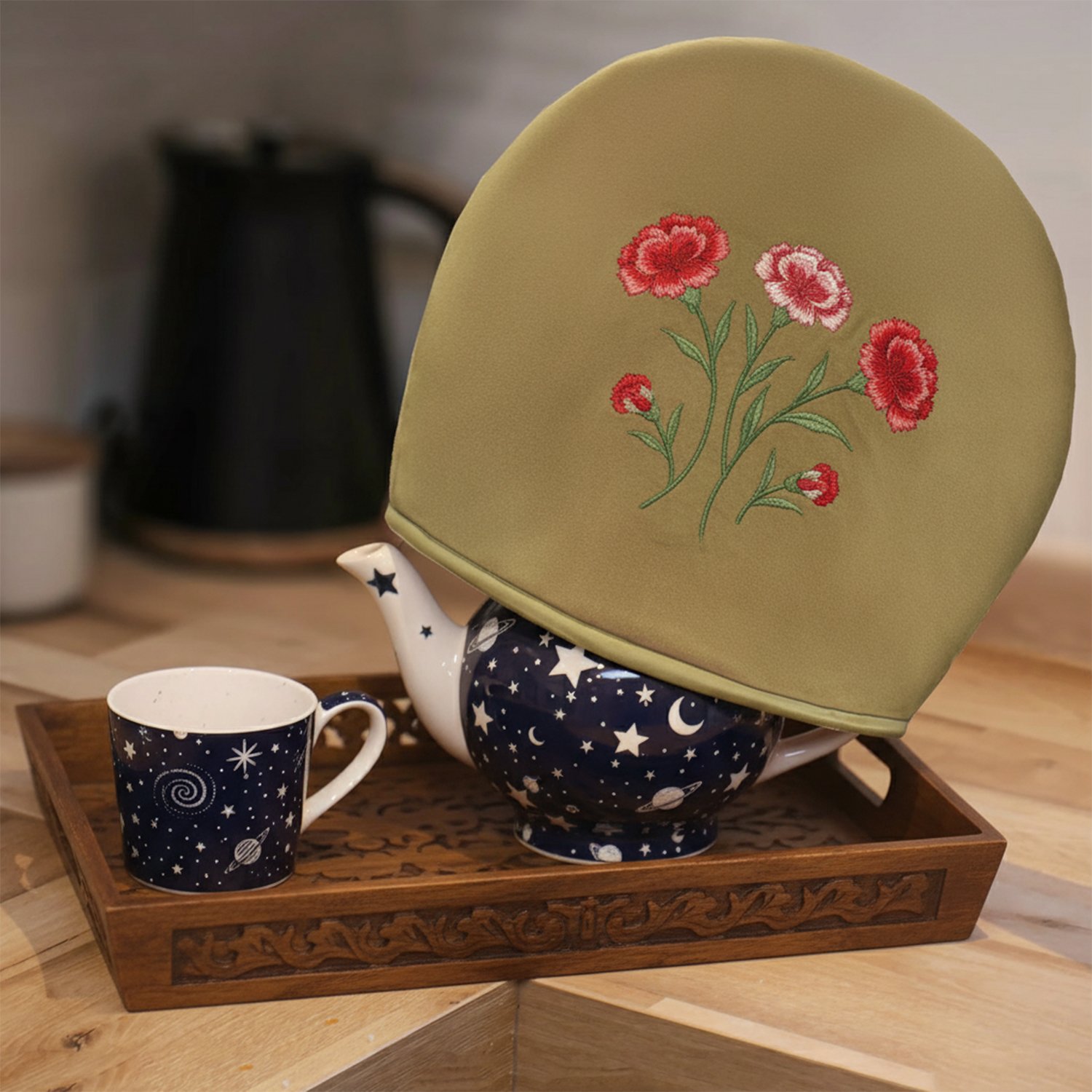
A proper British cup of tea starts with the right vessel. You need a genuine teapot, ideally one made in the UK, to achieve that perfect brew. For a standard pot, 2-3 teabags work best, while mini teapots require just one.
The material matters too – porcelain holds heat well without affecting flavor. Tea enthusiasts know a good pot has a balanced weight, pours without dripping, and features a lid that stays put during serving.
No proper tea setup exists without a tea cozy. This insulated cover keeps your brew hot for much longer. Think of it as a snug jacket for your teapot that traps heat inside. Most British tea lovers place their covered pot on melamine trivets to protect surfaces from heat damage.
Warming the pot before adding tea also helps maintain the ideal brewing temperature. This simple step makes a big difference in the final taste of your English cup of tea.
Fine china or sturdy mugs
British tea traditions embrace both fancy and practical drinkware options. For daily tea enjoyment, sturdy mugs offer durability and comfort. These reliable vessels keep your tea hot longer and stand up to frequent use.
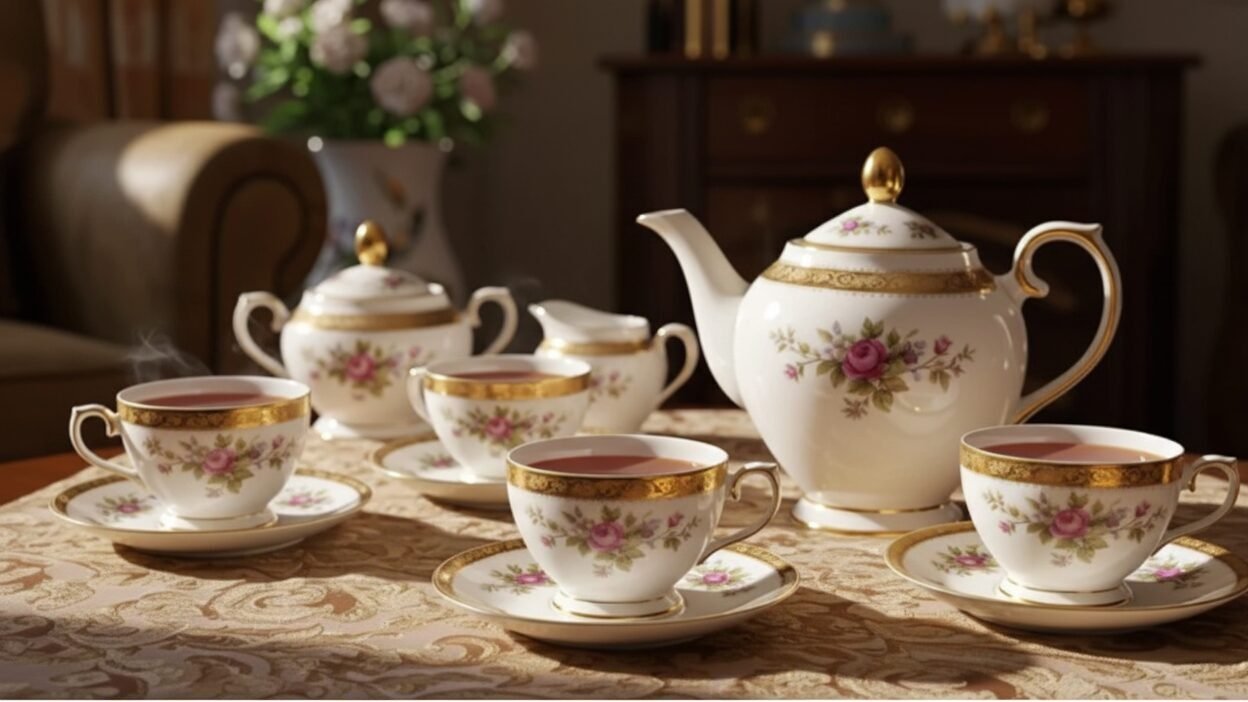
Fine china cups and saucers, meanwhile, transform tea time into a special occasion with their delicate appearance and traditional charm. Many English households reserve their best porcelain for guests or weekend afternoon tea.
The right cup enhances your tea-drinking experience, whether you prefer milk first or tea first in your brewing method.
Next, we’ll explore the essential steps to brew tea properly like a true English tea enthusiast.
Steps to Brew Tea Like the English
Learn the authentic five-step ritual that turns simple tea leaves into the perfect British cuppa – from boiling fresh water to the great milk debate that divides the nation – and transform your daily tea break into a proper English tradition.
Boil the water properly
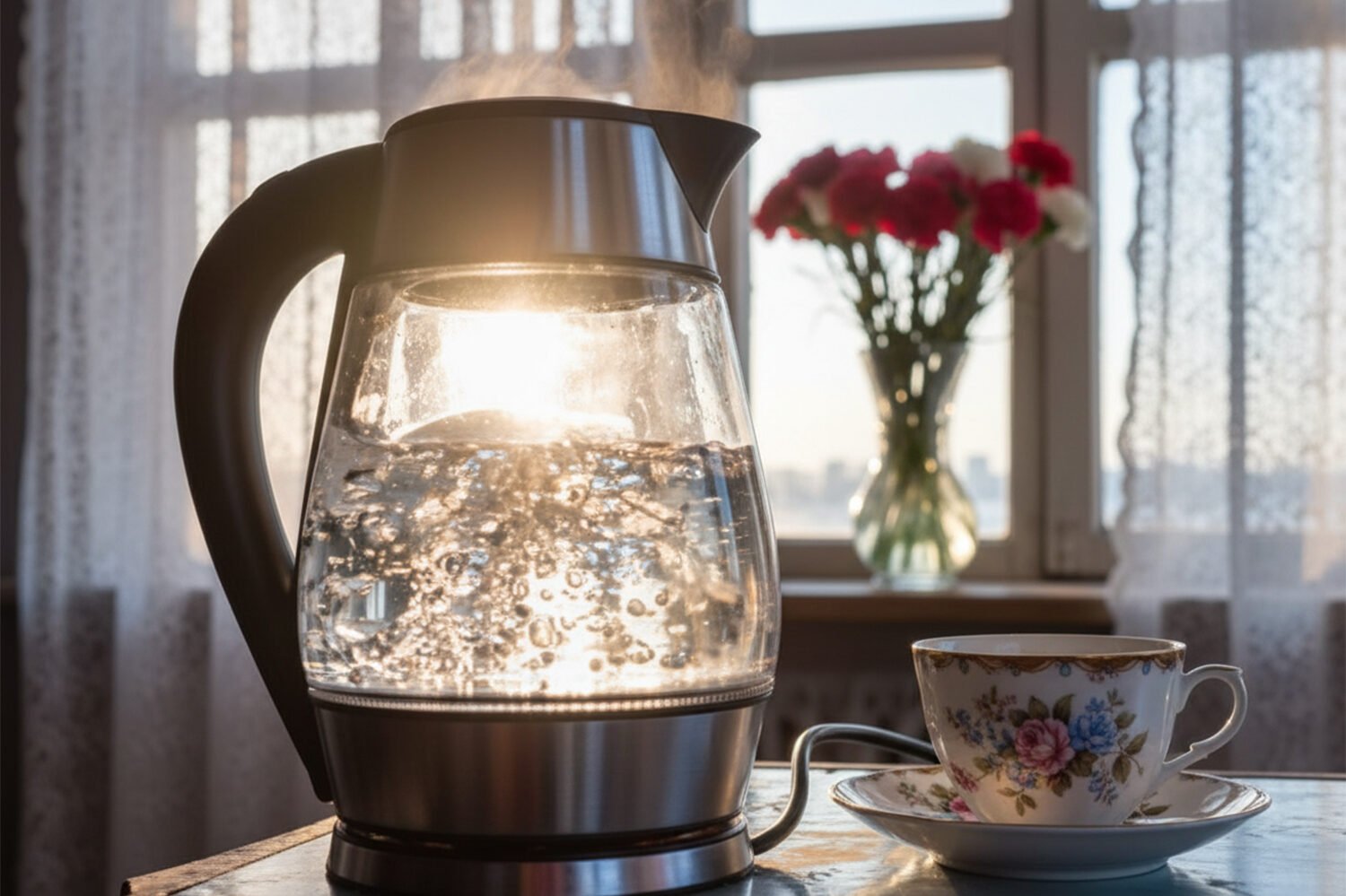
Proper British tea demands truly boiling water, not just hot water. Fill your kettle with fresh, cold water and bring it to a rolling boil at 212°F (100°C). Many tea lovers make the mistake of using water that’s simply hot, which fails to extract the full flavor from the tea leaves.
An electric or stovetop kettle works best for this crucial step. The bubbling action of boiling water helps release oxygen, which improves the taste of your final cup.
The boiling process isn’t just tradition—it serves a practical purpose for brewing tea like the English. Boiling water breaks down the tea leaves properly and pulls out all the essential oils and flavors.
You’ll notice a significant difference between tea made with merely hot water versus properly boiled water. The rich amber color and full-bodied taste only come from water that has reached a complete boil.
This step forms the foundation of a proper cup of British tea.
Warm the teapot
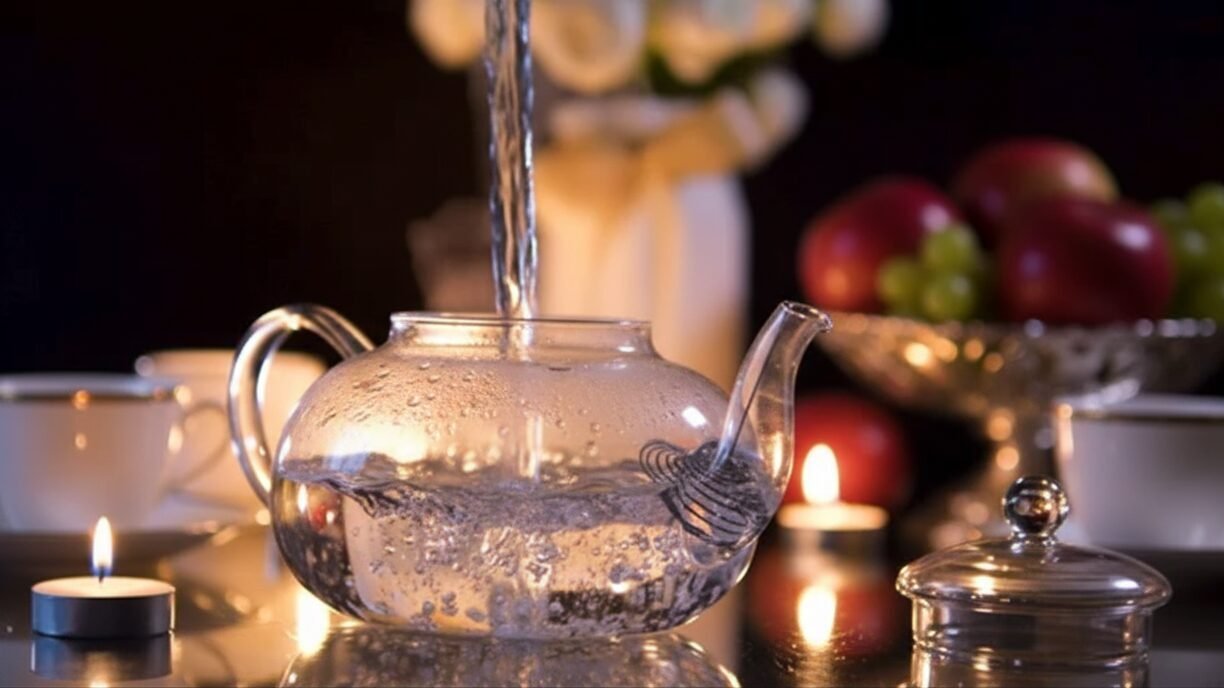
After your water reaches a rolling boil, the next crucial step awaits. Warming the teapot stands as a fundamental ritual in English tea preparation. Pour about a cupful of that freshly boiled water into your empty teapot and swirl it around for 30 seconds.
This simple act serves a practical purpose – it maintains the brewing temperature once you add your tea leaves. The ceramic or porcelain vessel absorbs heat from this initial water, preventing it from stealing warmth from your actual brewing water.
Many tea enthusiasts skip this step, then wonder why their brew tastes flat. A cold pot can drop water temperature by 18-27°F / 10-15°C almost instantly. This temperature loss ruins the extraction process for black teas like English Breakfast or Earl Grey.
For best results, discard the warming water completely before adding your loose tea or tea bags. Then cover your teapot with a tea cozy to lock in heat throughout the steeping process.
British tea lovers know this step makes the difference between an ordinary cup and a proper cup of tea.
Add tea bags or loose tea and boiling water
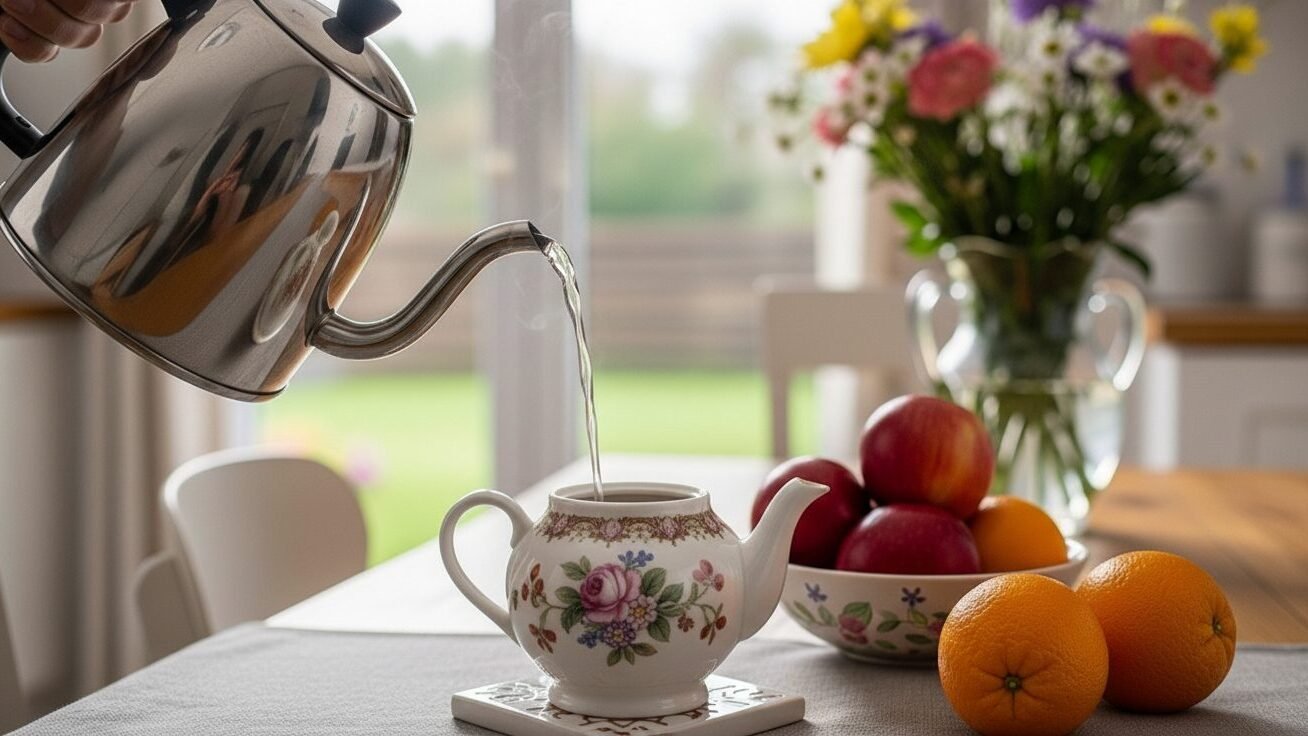
Now comes the crucial moment in your tea-making ritual. Pour freshly boiled water directly over your tea bags or loose leaves. British tea lovers prefer stronger blends than their American counterparts, so we suggest using Twining’s English Breakfast if you’re in the U.S. For loose tea, add one teaspoon per cup plus “one for the pot.” The water must be at a full boil (212°F/ 100°C) to extract the full flavor from black tea leaves.
Your next step involves proper coverage during steeping. Place a lid on your teapot or cover your mug with a small plate. This traps the heat and allows the tea to brew properly. The traditional english way demands patience – steep your tea for at least 2 minutes to develop rich flavor.
Many tea experts use a tea cozy to keep the pot warm throughout this process, especially if making tea for a group.
Steep the tea for the right amount of time
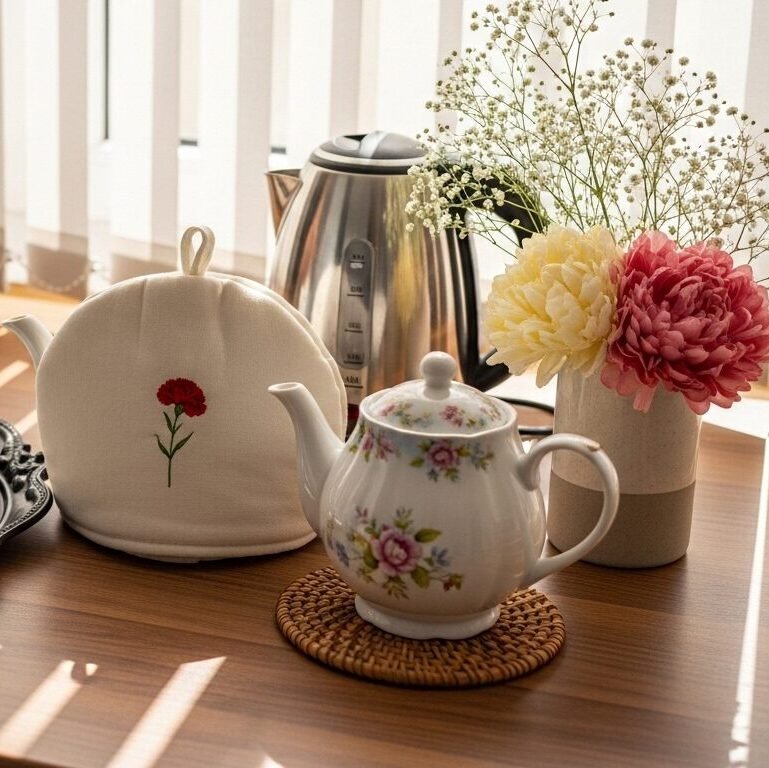
After adding your tea to the hot water, the steeping time makes all the difference in your brew’s flavor. The traditional English method calls for a 4-minute steep, which creates a robust cup with full-bodied taste.
Many tea experts agree that steeping time affects flavor more than almost any other factor in tea preparation.
Your personal preference matters too. Some English tea drinkers prefer a 3-minute steep for a milder flavor, while others might extend to 5 minutes for a stronger cup. Interestingly, steeping preferences often reflect class distinctions in British culture.
The right steeping time transforms ordinary tea leaves into that quintessential British tea experience. Avoid squeezing tea bags at the end of steeping, as this can release bitter tannins that spoil the perfect cup of tea.
Add milk and sugar to taste
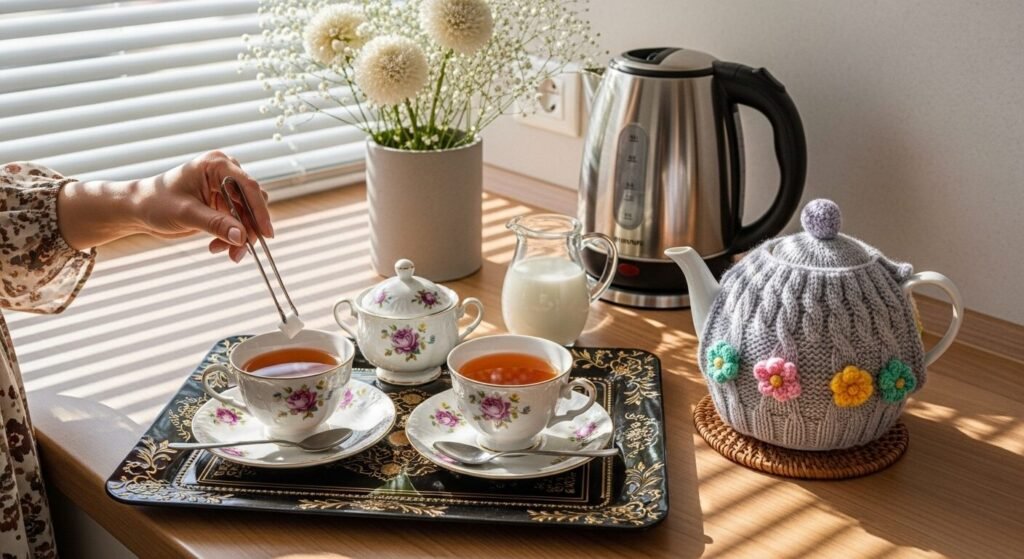
Most English tea drinkers add milk and sugar to their brew for the perfect balance. You’ll want to put one teaspoon of milk in your cup to start. Many people also enjoy one teaspoon of white sugar for sweetness.
Sugar goes in first so it dissolves properly in the hot tea, followed by the milk. Brown sugar and honey aren’t typical choices for a proper British cup.
Personal taste matters with tea additions. Some prefer more milk for a creamier drink, while others like just a splash. The same goes for sugar – you might want more or less depending on your sweet tooth.
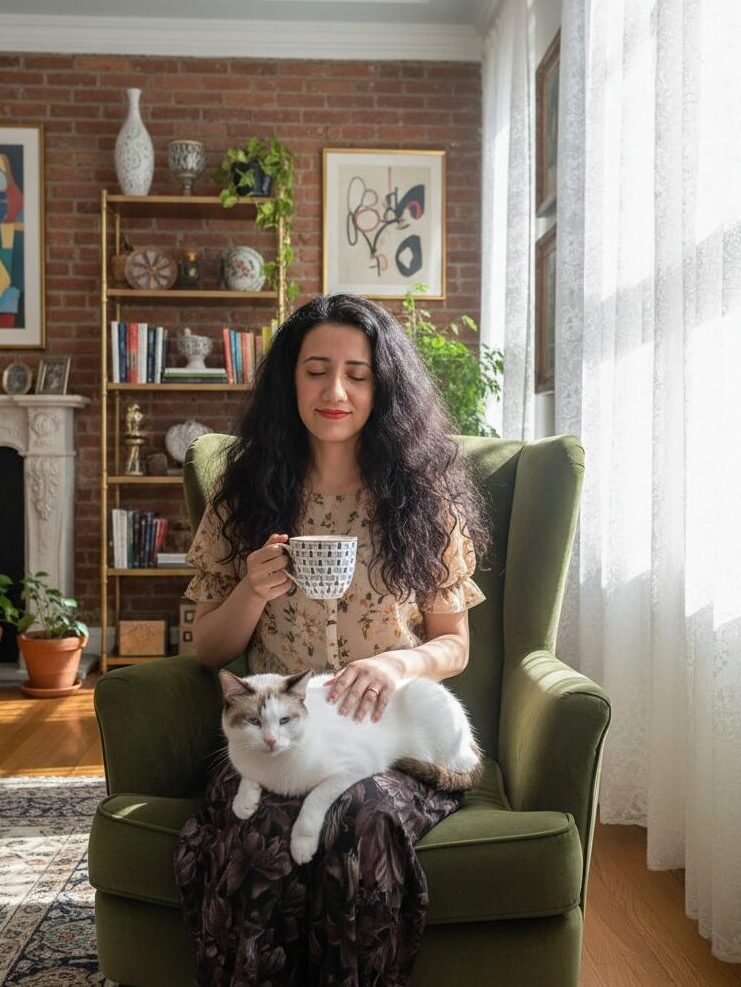
Conclusion
Brewing tea like the English brings a touch of British tradition to your daily routine. The perfect cup demands quality black tea, fresh water at a full boil, and the right steeping time.
Whether you add milk first or last remains a personal choice, though each method has its loyal defenders. British tea culture values both the drink itself and the ritual surrounding it.
So grab your kettle, warm your teapot, and enjoy this centuries-old practice that turns simple leaves into a proper cuppa.
FAQs
1. What is the proper way to make a cup of British tea?
A proper cup begins with bringing fresh, cold water to a full rolling boil (100°C / 212°F). Use some of this water to warm your teapot first, then discard it. Add your tea—one bag or one teaspoon of loose leaves per person—pour the boiling water over it, and let it steep for 3-5 minutes before serving.
2. Should I put milk in first or last when making tea?
This is a famously passionate debate in Britain! Traditionally, putting milk in first (MIF) was done to prevent hot tea from cracking delicate porcelain cups. Today, those who add milk in last (MIA) argue it’s easier to judge the tea’s strength and achieve the perfect colour. Both methods are common, so feel free to choose whichever you prefer.
3. How long should I let tea brew?
For robust black teas like English Breakfast, the ideal steeping time is between 3 to 5 minutes. A shorter brew will be milder, while a longer one creates a much stronger, more robust flavour. Experiment within this range to find the perfect strength for your taste.
4. Do I need a tea strainer if I’m using loose tea?
Yes, a tea strainer is essential when brewing with loose-leaf tea. It sits over your cup to catch the leaves as you pour from the teapot, ensuring you have a smooth, leaf-free drink.
5. What foods go well with a proper cup of British tea?
Biscuits are the most classic and simple pairing for a daily cup of tea. For a more traditional afternoon tea, popular accompaniments include scones served with clotted cream and jam, small finger sandwiches, and a variety of cakes and pastries.
6. How is British tea different from American tea?
The main difference lies in preparation and cultural habit. British tea culture centers on strong black tea blends served hot, almost always with milk. In the United States, while hot tea is also popular, “tea” very often refers to sweetened iced tea, which is typically served with lemon rather than milk.
References
- https://www.christinascucina.com/how-to-make-proper-cup-of-tea-british/
- https://www.alphafoodie.com/how-to-make-british-tea/ (2022-04-14)
- https://www.food.com/recipe/the-perfect-cup-of-tea-british-style-230372
- https://cooking.stackexchange.com/questions/124379/what-is-the-proper-way-to-prepare-a-cup-of-english-tea


